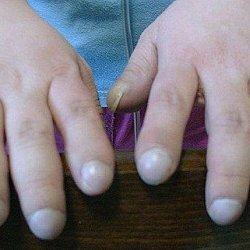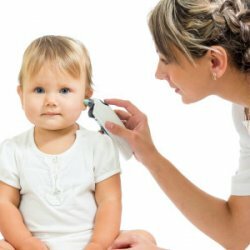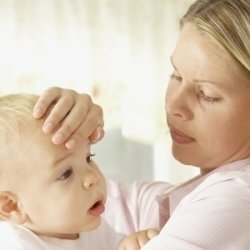Treatment of pneumonia in a child

Pneumonia or pneumonia is an insidious disease that requires constant attention, because the child's condition may worsen at any moment, so it is not worth risking the child's health. Most often, if the child is not 3 years old, he is hospitalized, in order to avoid the development of complications, he is constantly under observation. Older children are released home, but on the condition that parents will strictly follow all recommendations.
Treatment of pneumonia with antibiotics
At present, doctors have about 200 antibacterial drugs that are sold in more than 600 brand names. When choosing a drug for a child, one should be guided not only by efficacy and potential toxicity, but also by ease of use and cost.
Treatment of pneumonia in the baby is carried out using antibiotics, which can be divided into three groups: semisynthetic penicillins and penicillin( amoxicillin, ampicillin, amoxiclav), macrolides( erythromycin, azithromycin, rovamycin), cephalosporins of different generations( cephalexin, cefuroxime, ceftriaxone, cefoperazone).
If pneumonia is severe, imipenems( thienam), aminoglycosides, as well as a combination of drugs from different groups, such as metronidazole and sulfonamides, are used. When legionella pneumonia treatment is rifampicin. Fungal pneumonia is treated with amphotericin B or fluconazole( diflucan).
Other methods of treating pneumonia
Each case of inflammation of the lungs in a child occurs with different characteristics, so the doctor can decide to prescribe additional drugs: antiallergic, expectorant, vitamins, bronchodilators.
Systematically, of course, antipyretics are not prescribed, because it greatly complicates the evaluation of how effective antibacterial therapy is. Of course, if a child has premorbid indications, then febrifugals are simply necessary to lower the temperature, thereby preventing febrile convulsions.
Fever with an infectious disease( acute respiratory infections is not an exception), is considered as a factor that stimulates the defenses of the body. At an elevated temperature, most viruses and bacteria die faster, against the background of the temperature the body of the child gives a full immune response. Frequent and unreasonable prescription of drugs with increasing temperature leads to various complications.
If a patient with pneumonia has a persistent and painful cough, then use mucoregulatory drugs that facilitate the evacuation of sputum( these are expectorants) and thinning phlegm( these are mucolytic drugs) funds.
Expectorants by increasing the bronchial motility increase the secretion of the liquid sputum component, improving the transport of phlegm. If an expectorant is prescribed to the baby, care must be taken to use the water sufficiently, as the loss of water increases the viscosity of the sputum."Doctor Mom", "Bronchicum" - this is also expectorant.
Mucolytic drugs chemically affect the mucin molecule, thereby diluting sputum. Mucolytic action has such derivatives of alkaloid vazicin as: bromhexine, mucosalvan, bisolvon. These drugs reduce the viscosity of secretion, stimulate the production of endogenous surfactant, restore mucociliary clearance. Mukolitic and mukoreguliruyuschim effect at the same time have such drugs as mucodine, mucoproton, bronchitis. With the use of such drugs, the bronchial mucosa is regenerated, in addition, the structure of the membrane is restored, the number of goblet cells is reduced, mucociliary clearance is improved, IgA secretion is restored.
Antihistamines and drugs that depress cough better not to apply.
Currently, for the treatment of pneumonia, mustard and cans are not used.
Physiotherapy
In the acute course of the disease, electrophoresis, microwave is prescribed.
LFK and massage are prescribed after the temperature normalization.



